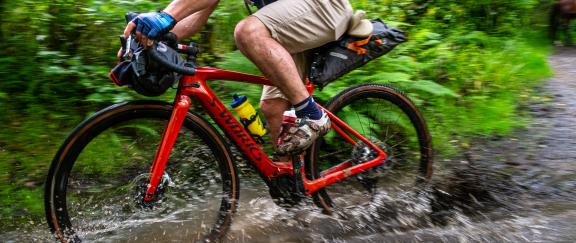
We try to be clear and consistent when we describe how hilly or busy a route is, or what its surface is like. Here’s a guide to what our terms mean and how we arrive at our ratings.
We get some of our information by analysing GPX files (digital recordings) of the routes, and our editors can override the automated analysis when they need to.
Hilliness
We base our hilliness ratings on how steep and how long the hilly sections are.
Flat – maximum gradient 4% at any point. Flat, or very gradual inclines.
Hilly – maximum gradient 12%+ at any point, or over 20% of the route at a 5%+ gradient. Steep hills, or multiple hills of at least moderate steepness, or both
Moderate – everything else
Surfaces
We use OpenStreetMap data and other data to tell us about the proportions of surfaces a route covers. They vary quite a lot within categories and at different times of the year, so it’s worth reading the full route description to find out more.
The ‘best type of bike’ for a given route depends a lot on the rider (and the time of year) but we’ve tried to give a rough idea below.
Paved – tarmac or equivalent, fine on any cycle
Unsurfaced – typically a compacted/gravel surface, such as an (unpaved) rail trail or towpath route, a forestry road or a gravel track. Most people would feel fine on a hybrid cycle or another cycle with tyres that are more than about 32mm (1 1/4in) wide.
Rough – anything that is likely to be best suited to a mountain bike, or fat-tyred gravel cycle, depending on your level of confidence. Bridleways are assumed rough unless we know that they are not.
Technical – a track with features that need some bike-handling skills, such as roots, drops or larger rocks. Often at a dedicated mountain bike trail centre
Other labels
Traffic-free – dedicated cycleways, paths and tracks
Busy roads – this simply means A roads

